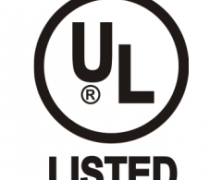While consumers are learning more about LED lighting, there are still many questions to be answered. Many LED products lack minimum safety, environmental and performance standards, leaving consumers unsure about product reliability. Thankfully, there are a number of recognized LED lighting certifications that consumers can rely upon. Let’s take a look at some of these certifications, and what they actually mean for consumers. UL Listed UL (Underwriters Laboratories) is an American safety and consulting company offering services in 104 countries worldwide. Established in 1894, UL first gained recognition by drafting safety standards and conducting safety analysis for electrical devices and components as the rise of residential electricity transmission made electronics ubiquitous in American households. As an LED lighting certification, UL Listed means that UL has tested representative samples of the product and determined it meets UL’s requirements based on its published Standards for Safety. The safety certification may also include additional information, meaning the product is UL Listed for Canada and the U.S. The UL logo used alone on packaging means the product and all its components have successfully passed UL examination as a working unit. LED lights that are UL Listed are safe for use in your home or business. Here is the UL Listed Website if you’d like to read more. CE Marking The CE mark is mandated for certain products sold within the European Economic Area, enabling freedom of movement in the European market. This marking means that the manufactured product meets EU safety, health and environmental standards that have been stipulated by legislation. Products demarcated with CE are not necessarily produced in Europe, but the marking means they can legally be sold there. All LED lights sold in Europe must carry the CE mark, which is often awarded by authorized third party organizations....






